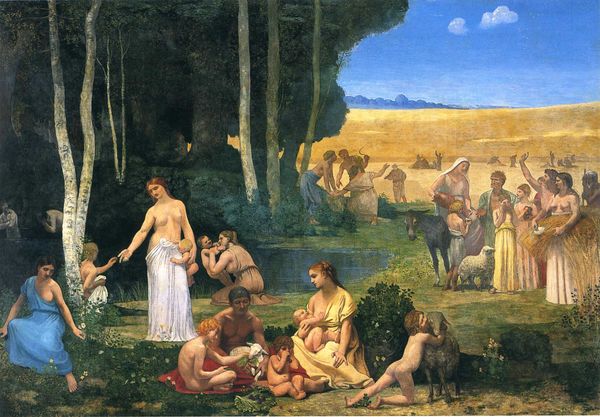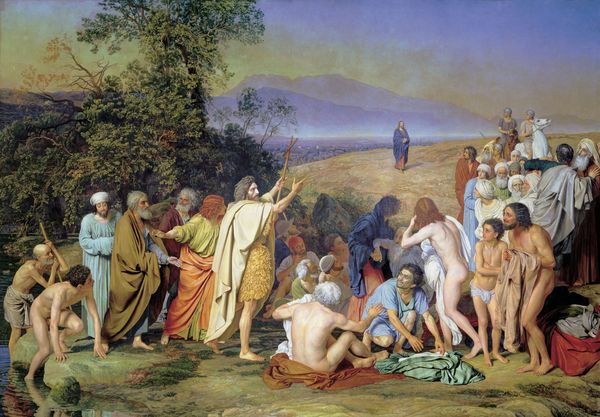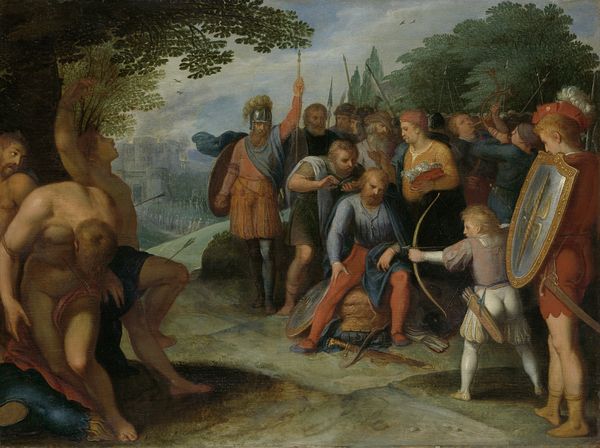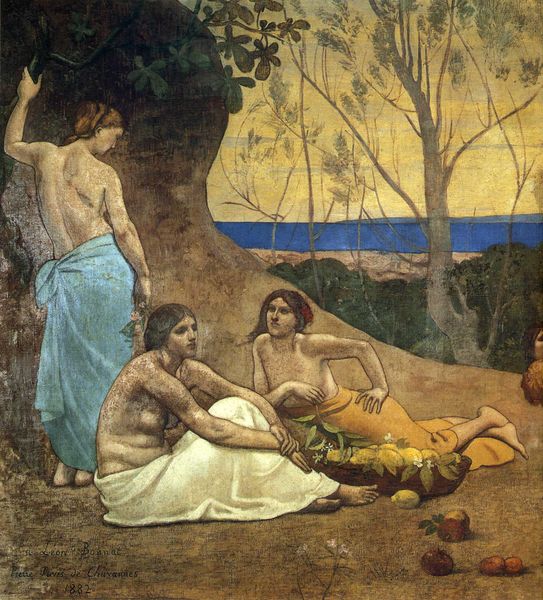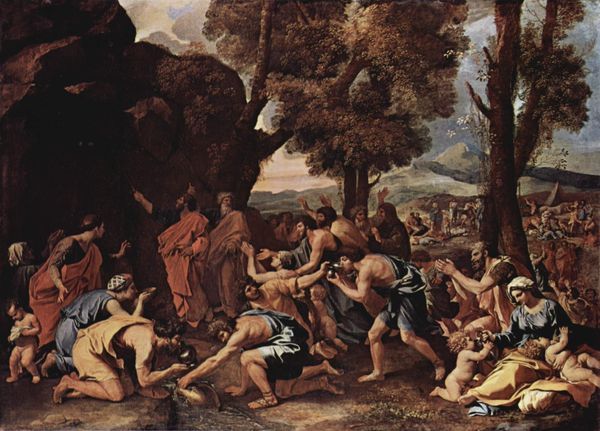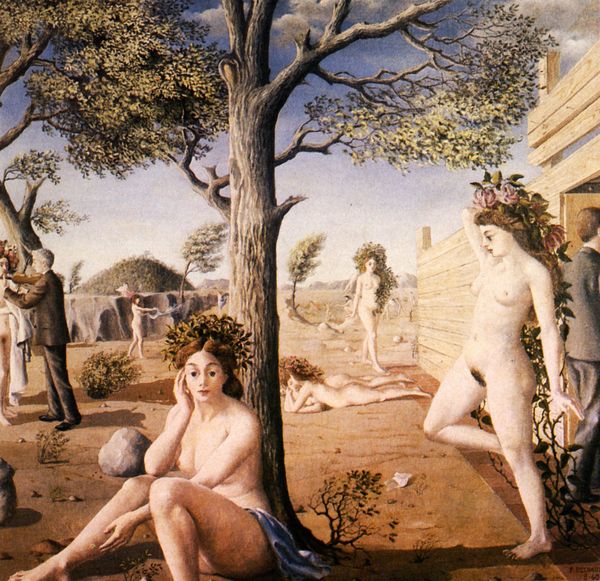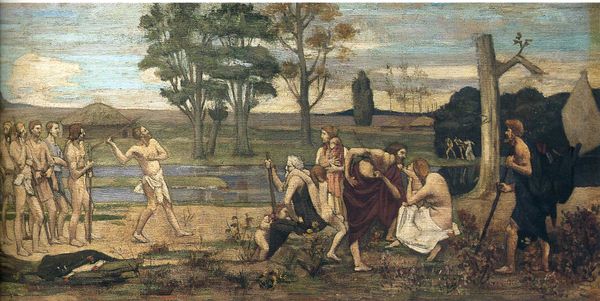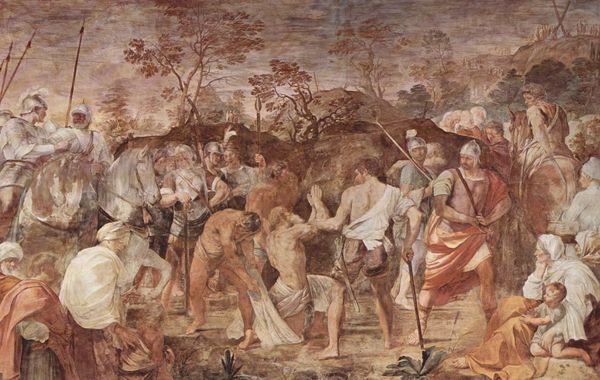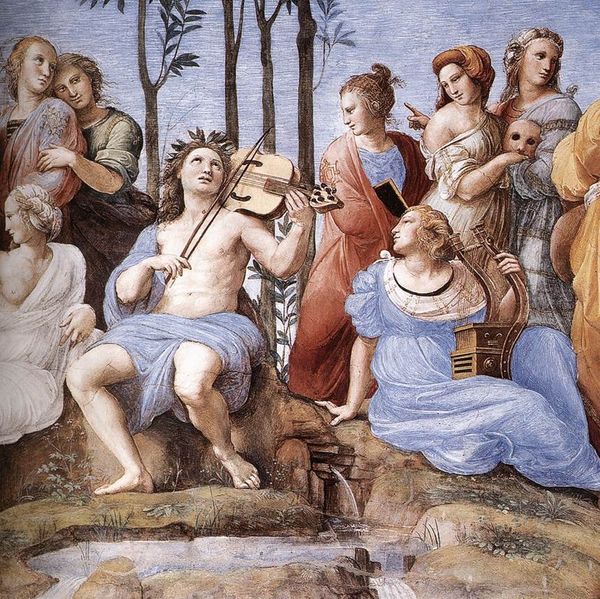
painting, mural
#
painting
#
landscape
#
group-portraits
#
symbolism
#
genre-painting
#
history-painting
#
academic-art
#
mural
Copyright: Public domain
Editor: This is "The Rest" by Pierre Puvis de Chavannes, and from what I gather, it's a mural that can be found in the Musée de Picardie. It feels like a hazy dream, like figures from a myth. I'm particularly drawn to the mix of active and passive figures within what appears to be an ancient, pastoral scene. How would you interpret the scene’s imagery? Curator: The power here lies in its placid and elegiac nature. "The Rest" feels outside of time. The imagery—the sickle-bearing figure, the gesturing elder, the resting workers—conjures ideas about cyclical time and archetypal roles. Think of harvest myths. Think of idealized labor. What about the tools to the right, almost forgotten on the ground? Editor: Those are definitely intriguing, nearly abandoned. What do they represent in relation to the figures at the work’s center? Curator: Those tools whisper of both labor and repose. Consider the composition—a harmonious balance between action and inaction. But what exactly are they resting from? Are they heroic figures who've completed great feats? Or just simply… people, briefly paused? The mural plays with the symbolism of classical history painting, reconfiguring our understanding of cultural memory and the universal need for tranquility. What does this contrast provoke in you? Editor: It really makes you consider how "rest" itself can become idealized, maybe even a source of its own sort of...pressure. To measure up to what "rest" is "supposed" to be. That's a novel idea, to ponder this expectation. Curator: Yes, precisely. The beauty and tragedy—we all search for and expect the moment of rest to reflect everything else around us. Editor: I'll definitely keep that perspective in mind as I move through the exhibit today. It seems really relevant to quite a lot of the work here.
Comments
No comments
Be the first to comment and join the conversation on the ultimate creative platform.
